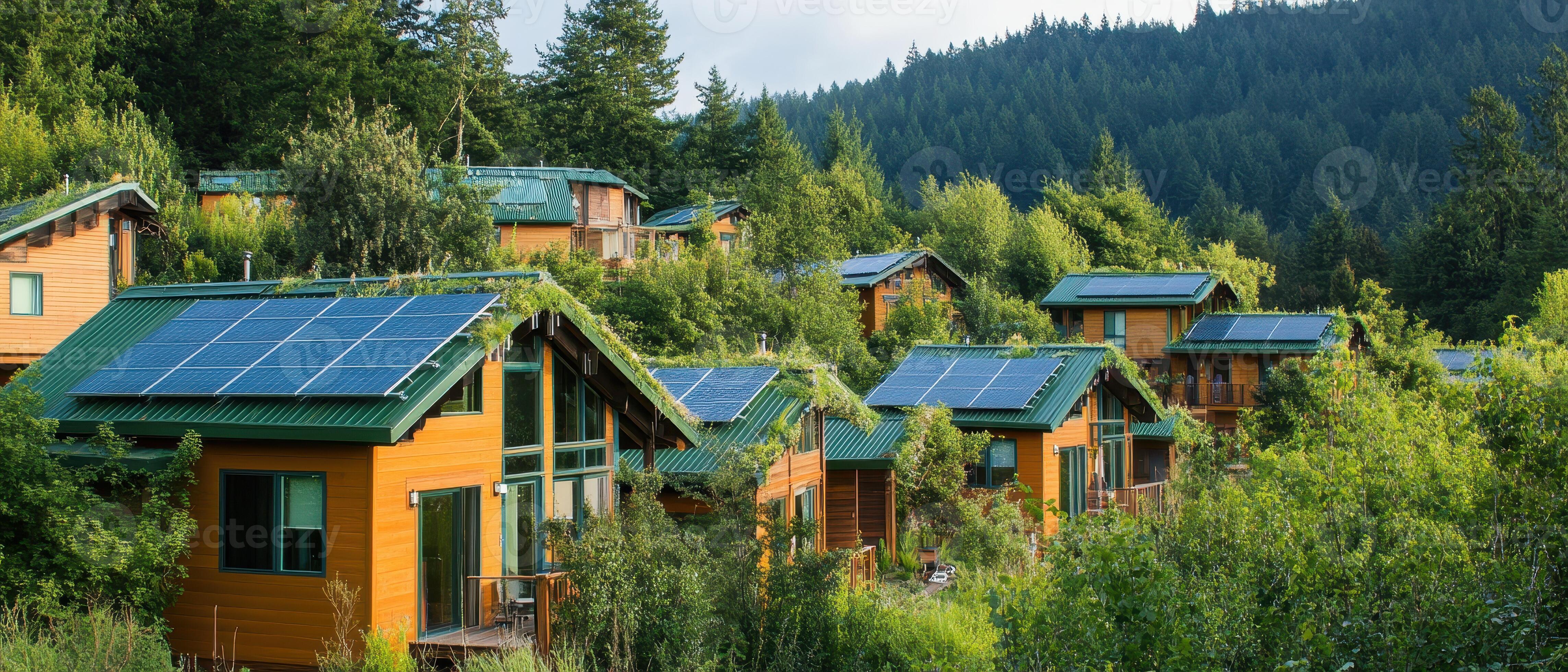Global temperatures are rising, extreme weather events are becoming more frequent, and ecosystems are under threat. Residential energy consumption accounts for a significant portion of greenhouse gas emissions, with homes relying heavily on fossil fuels for electricity, heating, and cooling. Transitioning to sustainable practices is critical, and homeowners play a pivotal role in this shift. By adopting solar energy, solar panel installation, energy efficient windows, and smart home technology, individuals can significantly lower their carbon footprints. This article explores how these technologies work together to create eco-conscious homes, offering practical solutions for a greener future.
Section 1: Environmental Impact of Solar Panel Installation
Solar energy is a cornerstone of sustainable living, harnessing the sun’s abundant and renewable energy to power homes. Solar panel installation allows homeowners to generate clean electricity, drastically reducing reliance on fossil fuels like coal, oil, and natural gas, which are major contributors to carbon dioxide (CO2) emissions. According to the International Energy Agency, solar power could prevent billions of tons of CO2 emissions annually if widely adopted.

The environmental benefits of solar panel installation are profound. Once installed, solar panels produce electricity with zero emissions during operation, unlike fossil fuel-based power plants that release CO2, methane, and other pollutants. For example, a typical 6-kilowatt solar system in a sunny region can offset approximately 8 metric tons of CO2 per year, equivalent to planting 200 trees or removing a gasoline-powered car from the road. Additionally, solar panels have a long lifespan, often exceeding 25 years, providing decades of clean energy with minimal environmental impact.
Beyond reducing emissions, solar energy mitigates other ecological harms. Fossil fuel extraction and combustion degrade air and water quality, harm wildlife, and contribute to deforestation. By contrast, solar panel installation requires no fuel and has a relatively small land footprint, especially when panels are mounted on rooftops. While the production of solar panels involves some energy and resource use, advancements in manufacturing have reduced their carbon footprint, and the energy payback period is typically less than two years. Homeowners who invest in solar energy not only lower their household emissions but also contribute to a broader shift away from fossil fuel dependence, amplifying the environmental impact.
Read more: Expert Tips for Selecting Top Local Siding Installation Companies
Section 2: Contribution of Energy Efficient Windows to Sustainability
While solar energy addresses electricity generation, energy efficient windows tackle another major source of household emissions: heating and cooling. In many homes, up to 30% of energy used for temperature regulation is lost through poorly insulated windows. By installing energy efficient windows, homeowners can significantly reduce energy consumption, complementing the benefits of solar panel installation.
Energy efficient windows are designed to minimize heat transfer, keeping homes warmer in winter and cooler in summer. They often feature double or triple glazing, low-emissivity (Low-E) coatings, and gas-filled panes (such as argon or krypton) that enhance insulation. These technologies reduce the need for heating and cooling systems, which are often powered by fossil fuels or grid electricity with a high carbon footprint. For homes equipped with solar energy, energy efficient windows ensure that the clean electricity generated is used more effectively, maximizing sustainability.

The environmental impact of energy efficient windows is measurable. According to the U.S. Department of Energy, upgrading to high-performance windows can reduce household energy use by 12–33%, translating to hundreds of pounds of avoided CO2 emissions annually. In a home with solar panel installation, this reduction amplifies the carbon savings, as less solar energy is needed to maintain comfortable indoor temperatures. Additionally, energy efficient windows contribute to sustainability throughout their lifecycle. Modern windows are often made with recyclable materials, and their durability reduces the need for frequent replacements, further lowering their environmental footprint.
By combining energy efficient windows with solar energy, homeowners create a synergistic effect. Solar panels provide clean power, while energy-efficient windows reduce overall energy demand, ensuring that every watt of solar electricity is used efficiently. This dual approach minimizes reliance on carbon-intensive energy sources, making homes more sustainable and resilient to climate challenges.
Read more: Home Repair Grants for Seniors: How to Get a New Roof and More
Section 3: Role of Smart Home Technology in Eco-Conscious Living
Smart home technology enhances the environmental benefits of solar energy and energy efficient windows by optimizing energy use and minimizing waste. These advanced systems, including smart thermostats, energy monitors, and automated appliances, empower homeowners to track and manage their energy consumption with precision, fostering eco-conscious living.
One of the most impactful features of smart home technology is energy usage tracking. Devices like smart meters and energy monitoring apps provide real-time data on electricity consumption, allowing homeowners to identify high-energy appliances or wasteful habits. For homes with solar panel installation, these tools can monitor solar energy production and usage, ensuring that clean energy is prioritized over grid electricity. For example, a smart home system might alert users when solar output is high, prompting them to run energy-intensive tasks like laundry or dishwashing during peak solar hours, reducing reliance on fossil fuel-based grid power.

Automation is another key feature of smart home technology. Smart thermostats, such as Nest or Ecobee, learn household patterns and adjust heating and cooling to minimize energy use while maintaining comfort. When paired with energy efficient windows, these devices further reduce energy waste by ensuring that temperature regulation is optimized. Automated lighting and smart plugs can also turn off devices when not in use, preventing phantom energy loads that account for up to 10% of household electricity consumption.
Smart home technology also integrates seamlessly with solar energy systems. For instance, smart inverters and battery storage systems, like Tesla Powerwall, store excess solar energy for use during nighttime or cloudy days, reducing the need for grid electricity. Automated window shades can adjust based on sunlight intensity, working with energy efficient windows to regulate indoor temperatures passively. These interconnected systems create a holistic approach to energy management, maximizing the environmental benefits of each component.
By leveraging smart home technology, homeowners can achieve significant carbon savings. Studies suggest that smart home devices can reduce household energy consumption by 10–20%, translating to hundreds of pounds of CO2 emissions avoided annually. When combined with solar panel installation and energy efficient windows, the cumulative impact is even greater, transforming homes into models of sustainability.
Conclusion: A Call to Action for Greener Homes
The synergy of solar energy, solar panel installation, energy efficient windows, and smart home technology offers a powerful solution for reducing carbon footprints. Solar panels provide clean electricity, eliminating reliance on fossil fuels. Energy-efficient windows lower energy demand for heating and cooling, enhancing the efficiency of solar power. Smart home technology optimizes energy use through tracking and automation, ensuring minimal waste. Together, these technologies create homes that are not only environmentally friendly but also cost-effective and future-ready.
As the climate crisis intensifies, every action counts. Homeowners have a unique opportunity to lead the charge toward sustainability by adopting these technologies. Governments and utilities often offer incentives, such as tax credits and rebates, to make solar panel installation and energy-efficient upgrades more accessible. Investing in smart home technology further amplifies these benefits, offering long-term savings and environmental impact.
The time to act is now. By embracing solar energy, energy efficient windows, and smart home technology, individuals can reduce their carbon emissions, contribute to a cleaner planet, and inspire others to follow suit. Together, we can build a future where every home is a beacon of sustainability, powering a greener world for generations to come.


.png)


.png)



.jpg)

.jpg)


.png)

